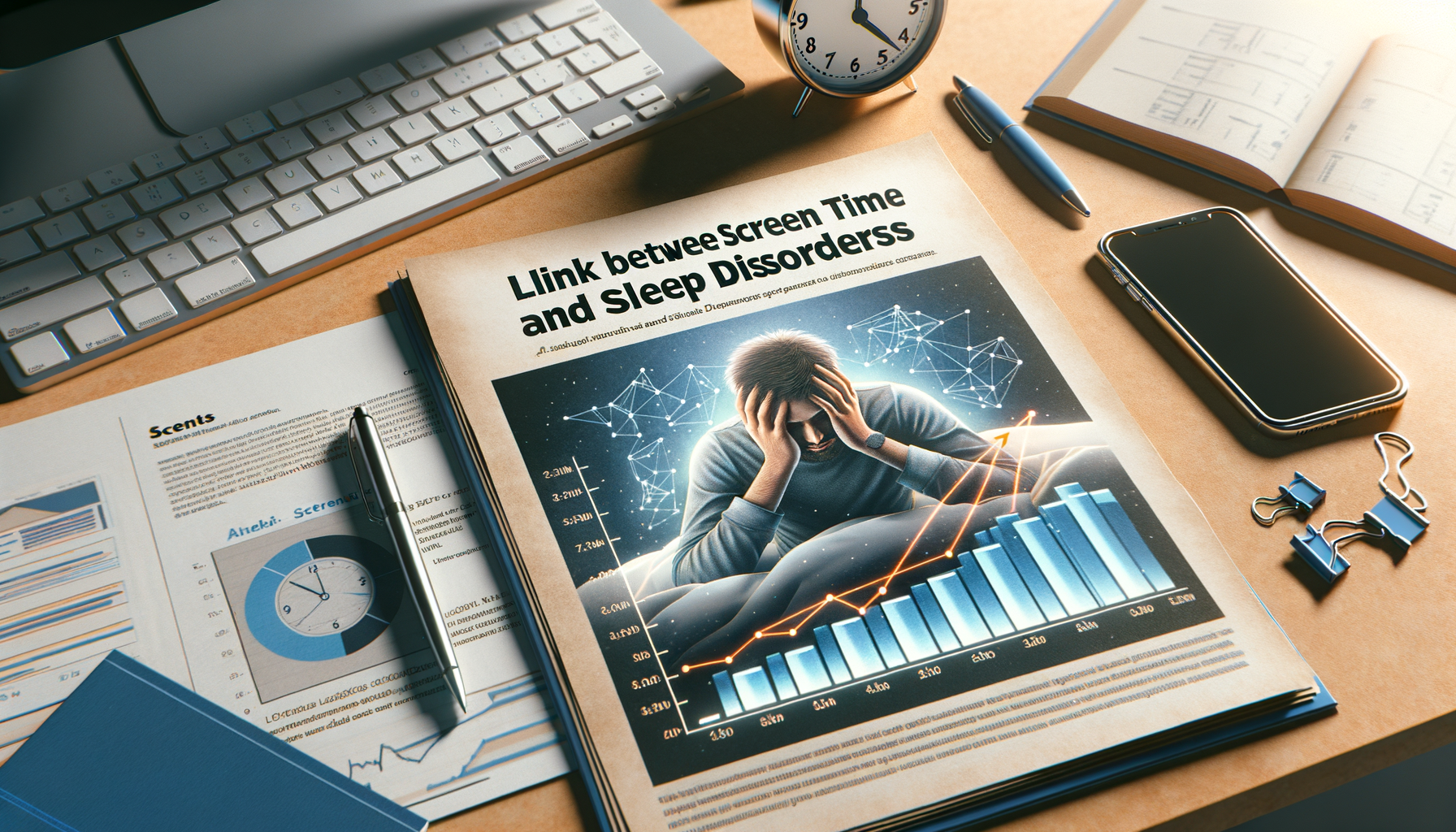
Screen Time’s Impact on Sleep: Unveiling the Connection
The glowing rectangles that dominate our modern lives – smartphones, tablets, laptops – are increasingly implicated in a growing epidemic: sleep disorders. A mounting body of research suggests a strong correlation between excessive screen time and disrupted sleep patterns, affecting individuals of all ages. This article delves into the scientific basis of this connection, exploring the mechanisms by which screen time interferes with healthy sleep, and providing actionable strategies to mitigate these negative effects.
The Blue Light Dilemma: One of the primary culprits behind screen-related sleep disruption is blue light. These short-wavelength, high-energy light waves are emitted by most electronic devices. While natural blue light from the sun helps regulate our circadian rhythm – the internal clock governing sleep-wake cycles – artificial blue light exposure at night disrupts this delicate balance. Blue light suppresses melatonin production, a hormone crucial for initiating sleep. This suppression delays the onset of sleep, reduces sleep duration, and diminishes sleep quality, leaving individuals feeling groggy and unrefreshed the following day.
The Brain’s Misinterpretation: Our brains interpret blue light from screens as daylight, signaling wakefulness. This signal overrides the natural sleep-inducing processes, even when we’re tired and ready for bed. The brain’s alertness centers are activated, making it difficult to wind down and fall asleep. This effect is particularly pronounced when screens are used close to bedtime.
Beyond Blue Light: The Engagement Factor: While blue light plays a significant role, screen time’s impact extends beyond its spectral properties. The engaging nature of digital content – social media, video games, streaming services – can lead to mental stimulation and emotional arousal, further hindering sleep. The constant influx of information and the pressure to stay connected can create a state of hyperarousal, making it difficult to disconnect and prepare for rest. This mental engagement can delay sleep onset and contribute to fragmented sleep throughout the night.
The Impact on Different Age Groups: Children and adolescents are particularly vulnerable to the negative effects of screen time on sleep. Their developing circadian rhythms are more susceptible to disruption by blue light and stimulating content. Insufficient sleep in this age group can have detrimental consequences on cognitive development, academic performance, and emotional regulation. Similarly, adults who engage in excessive screen time experience increased rates of insomnia, daytime sleepiness, and reduced work productivity.
The Vicious Cycle of Sleep Deprivation: Sleep deprivation further exacerbates the negative effects of screen time. When sleep-deprived, individuals are more likely to reach for their devices for distraction or as a coping mechanism for fatigue. This creates a vicious cycle where screen time disrupts sleep, leading to increased screen use, and further sleep disruption.
Mitigating the Negative Effects: Practical Strategies: While the evidence linking screen time to sleep disorders is compelling, there are practical steps individuals can take to minimize these negative effects:
- Limit Screen Time Before Bed: Establish a “digital curfew” at least one hour before bedtime. Avoid using electronic devices in the bedroom.
- Embrace Blue Light Filters: Utilize blue light filters on devices or wear blue-light-blocking glasses to reduce blue light exposure in the evening.
- Create a Relaxing Bedtime Routine: Engage in calming activities before bed, such as reading a physical book, taking a warm bath, or practicing mindfulness meditation.
- Optimize Sleep Environment: Ensure a dark, quiet, and cool bedroom conducive to sleep.
- Seek Professional Help: If sleep problems persist, consult a healthcare professional or sleep specialist to rule out underlying sleep disorders and develop a personalized treatment plan.
The Importance of Digital Wellness: In today’s digitally driven world, completely eliminating screen time is often unrealistic. However, cultivating healthy digital habits is crucial for protecting sleep quality and overall well-being. By understanding the mechanisms by which screen time impacts sleep, and by implementing practical strategies to mitigate these effects, individuals can regain control over their sleep and improve their quality of life.
Further Research and Considerations: While the current research strongly suggests a link between screen time and sleep disorders, ongoing studies continue to explore the nuances of this relationship. Future research should investigate the long-term effects of screen time on sleep architecture, the specific impact of different types of screen content, and the efficacy of various interventions to mitigate the negative consequences. Furthermore, public health initiatives aimed at promoting digital wellness and healthy sleep habits are essential for addressing this growing public health concern.
Individualized Approaches: Recognizing individual variability in sleep patterns and sensitivity to screen time is crucial. Personalized approaches to managing screen time and optimizing sleep hygiene are essential for achieving optimal sleep health. Factors such as age, chronotype (natural sleep-wake preference), and individual sensitivities should be considered when developing personalized strategies.
The Role of Education and Awareness: Increasing public awareness about the impact of screen time on sleep is paramount. Educating individuals, parents, and educators about healthy digital habits and sleep hygiene practices can empower them to make informed choices and prioritize sleep health in the digital age.















